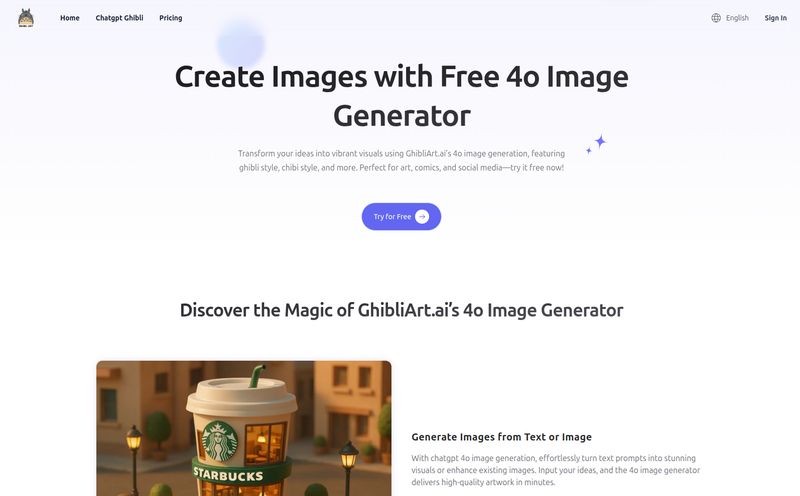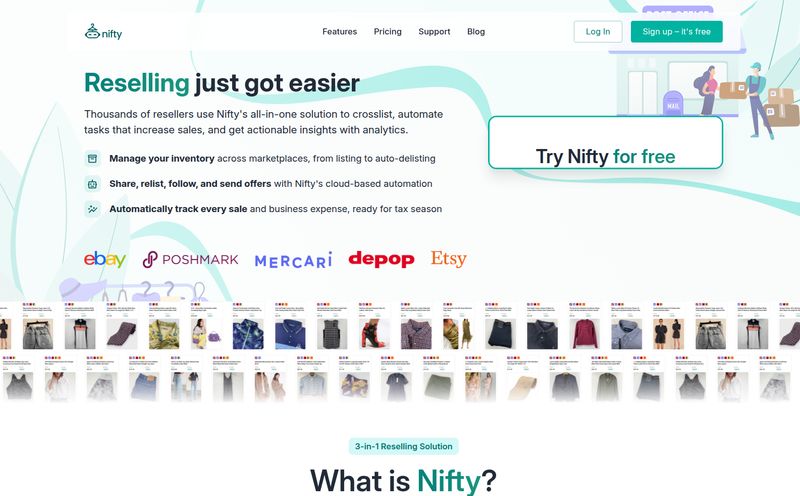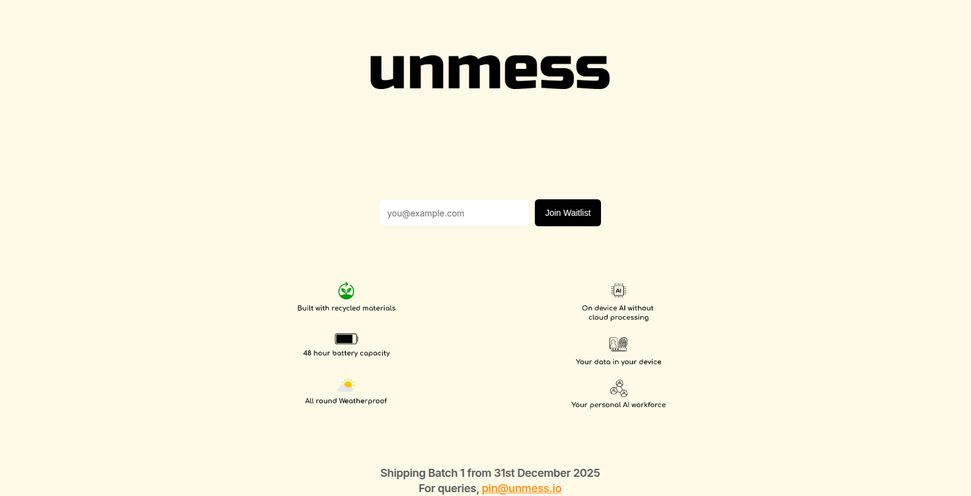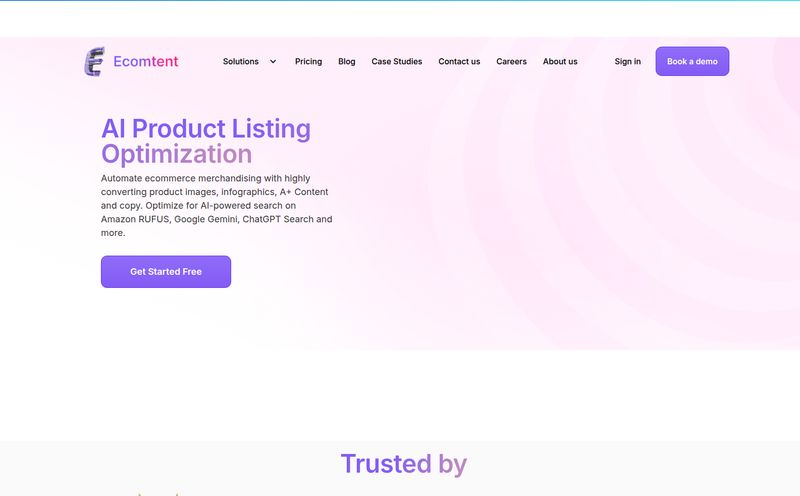As someone who lives and breathes SEO and tech trends, my inbox and feeds are a constant avalanche of the “next big thing” in AI. Every day there's a new tool that promises to rewrite your content, design your graphics, and probably walk your dog. It gets a little noisy. But every now and then, something cuts through that noise. Something that sounds… different. Something that sounds almost too good to be true.
A few weeks back, that something was a tool named simply “Q.” The buzz was that it was a completely free, no-registration-needed AI assistant with capabilities that rivaled some of the big-name subscription services. My curiosity wasn't just piqued; it was screaming. Free GPT-4o? Unlimited image generation? Let's be real, in this industry, “free” usually comes with a pretty big asterisk. But Q seemed to be the exception.
What Exactly Was Q? The Promise of a No-Strings-Attached AI
From what I gathered, Q wasn't just another ChatGPT wrapper. It was positioned as an advanced AI voice chatbot with a real personality. The developers claimed it had “a mind of its own,” designed to give you a more human-like, immersive conversation. It was built on OpenAI’s latest and greatest GPT-4o model, which meant it had the horsepower for some seriously impressive tasks.

Visit Q AI Chatbot
The core promise was staggering: all the advanced features of a premium AI tool without ever having to pull out your credit card or even type in your email address. For a content creator or a small business owner, that’s not just a tool; that's a potential game-changer. Imagine brainstorming blog ideas with a voice assistant, generating custom images for your posts on the fly, and doing it all for the grand price of zero. It sounded like a dream.
The Features That Made Q Sound So Good
It wasn't just the price tag that was turning heads. The feature list was a who's-who of AI's coolest tricks.
Full-Blown Voice Chat with Personality
This was a big one. We're not just talking text-to-speech. Q promised genuine, dynamic voice chat. You could talk to it, and it would talk back. On top of that, you could customize its persona. Want a witty, sarcastic brainstorming partner? Or a formal, data-driven research assistant? The idea was you could shape Q into the exact kind of companion you needed. This moves beyond a simple tool and into the realm of a personalized assistant, which is a place many companies are trying to get to.
Unlimited AI Image Generation on the House
This one almost made me laugh out loud. Unlimited? For free? Anyone who has played around with Midjourney or DALL-E 3 knows that generating images costs money. It requires a ton of computing power. The idea of a service offering this without a subscription or credit pack seemed financially… bold. Let's call it bold. Yet, that was the claim. Q could not only understand your image requests but also recognize images you uploaded, opening the door for some really interesting interactive possibilities.
Powered by the Mighty GPT-4o
Underpinning all of this was OpenAI's GPT-4o. This isn't just a minor update; it's the model that brought faster responses and a much more natural, human-like interaction style to the table. By building on GPT-4o, Q was promising state-of-the-art intelligence. It could reason, it could create, and it could understand text, audio, and images. This is the engine you’d want in your shiny new AI car.
My Hunt for Q: A Digital Detective Story
So, naturally, I had to try it. I cleared some time, grabbed a coffee, and set out to find this mythical free-for-all AI. I searched. I clicked. I followed a few breadcrumb trails from forums and social media posts. And I landed… on a 404 page.
"404 File not found."
The site, apparently hosted on GitHub Pages, was a digital ghost town. The link was dead. The amazing tool was gone. Vanished. What gives? It’s one thing for a tool to not live up to the hype; it’s another for it to disappear off the face of the internet entirely. My excitement quickly turned to old-fashioned curiosity. This wasn't just a failed product; this was a mystery.
So, What Happened? A Few Educated Guesses
While I don't have a direct line to the creators, my years in this space give me a few ideas about what might have happened to our dear, departed Q. Its a common story, really.
My first and most likely suspect is the cost. Running a service on GPT-4o, especially one that offers unlimited image generation and voice chat, is incredibly expensive. Every query sent to OpenAI's API costs money. When your business model is "free and no registration," your runway is pretty short unless you have some seriously deep pockets or another way to monetize (like ads, which didn't seem to be the plan). The burn rate was probably astronomical.
Another possibility? An acqui-hire. Maybe the tech was so impressive that a larger company swooped in, bought the technology and the talent, and shut down the public-facing free version. It happens all the time. A small, brilliant team builds something amazing, and a big player like Google, Microsoft, or even a fast-growing startup decides it's cheaper to buy them than to build it themselves.
Finally, it could have just been a passion project. The fact that it was hosted on GitHub Pages suggests it might have been a small-scale operation, maybe even a single developer. Perhaps they launched it, saw the insane demand (and the insane server bills that came with it), and decided to pull the plug before it got out of hand. A victim of its own success.
A Lesson from a Digital Ghost
The story of Q, whether it was a fleeting dream or a calculated experiment, is a perfect snapshot of the current AI landscape. It's the Wild West all over again. Amazing things are appearing overnight, but they can also disappear just as quickly. It serves as a good reminder for all of us: be careful what you build your workflow around. That incredible new free tool you found today might be a 404 page tomorrow.
While the mystery of Q is kind of a bummer, it's also exciting. It shows the level of innovation that's happening at all levels, from massive corporations to indie developers. The dream of a powerful, accessible AI assistant is clearly alive and well. Q might be gone, but the idea behind it will surely pop up again. I'll be here, waiting to see who tries it next.
Frequently Asked Questions About Q AI
- What was the Q AI chatbot?
- Q was advertised as an advanced AI voice chatbot built on the GPT-4o model. It promised features like customizable personas, voice chat, and unlimited, free AI image generation and recognition without needing to register or subscribe.
- Was Q AI really free to use?
- Yes, according to all its promotional material, its main selling point was that it was completely free to use. This likely contributed to its operational challenges and potential shutdown.
- Why can't I access the Q AI website anymore?
- The official website for Q now leads to a "404 File not found" error, meaning the page has been taken down. The exact reasons are unknown, but it's likely due to high operational costs, an acquisition by another company, or the project being discontinued by its developers.
- What technology powered the Q AI tool?
- Q was reportedly powered by GPT-4o, OpenAI's multimodal AI model known for its advanced conversational abilities and capacity to process text, audio, and image inputs.
- Are there good alternatives to what Q promised?
- While a single free tool with all of Q's features is rare, you can find similar capabilities in other tools. For advanced chat, you can use ChatGPT's free tier. For image generation, services like Midjourney or Leonardo.ai offer free credits. For voice interaction, the official ChatGPT app has excellent voice features.
- What does a '404 File not found' error on GitHub Pages mean?
- This specific error means that the server can be reached, but the specific file or page that was requested doesn't exist at that address anymore. For a project on GitHub Pages, it usually means the repository was made private, deleted, or the website files were removed.



